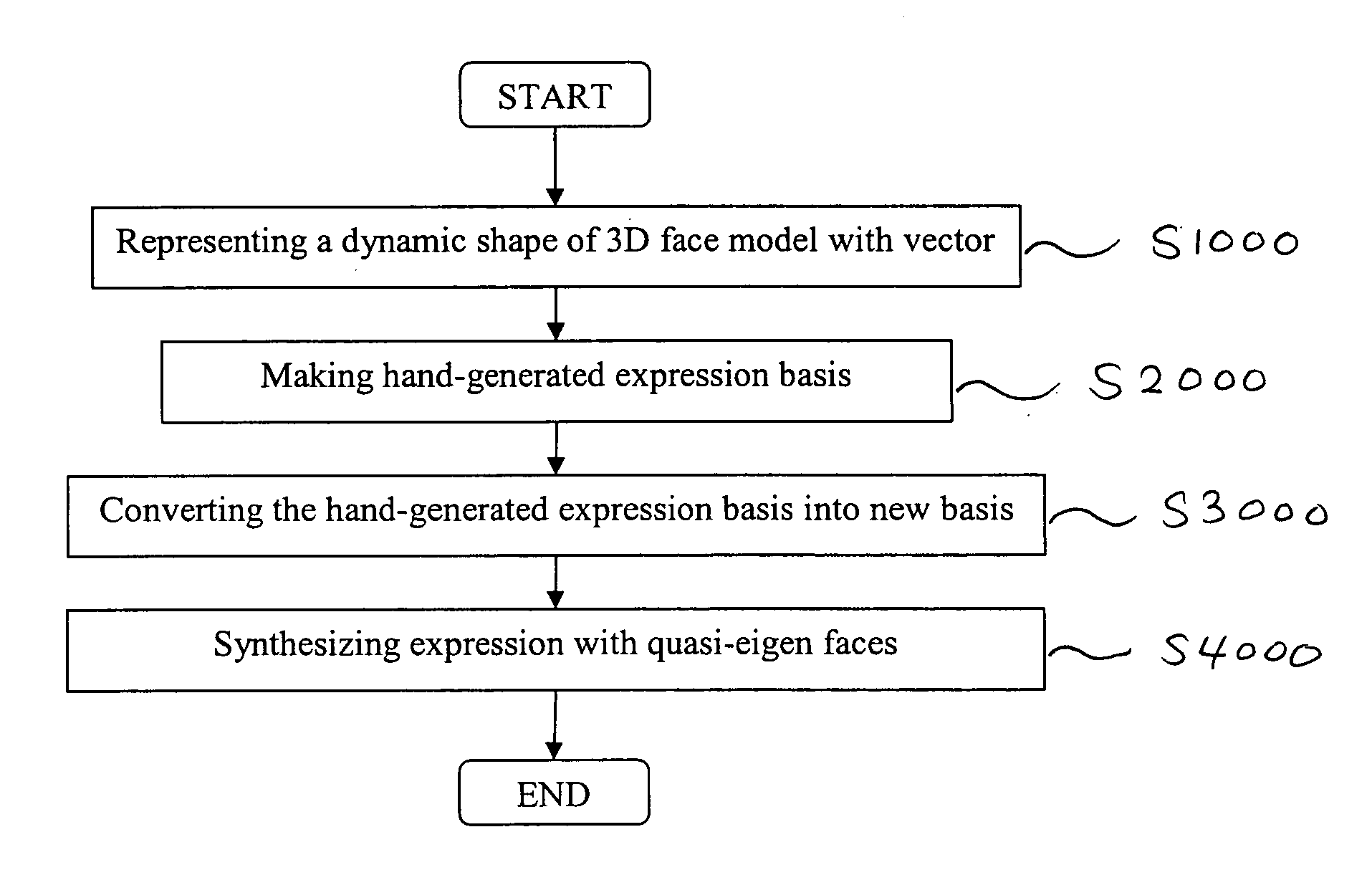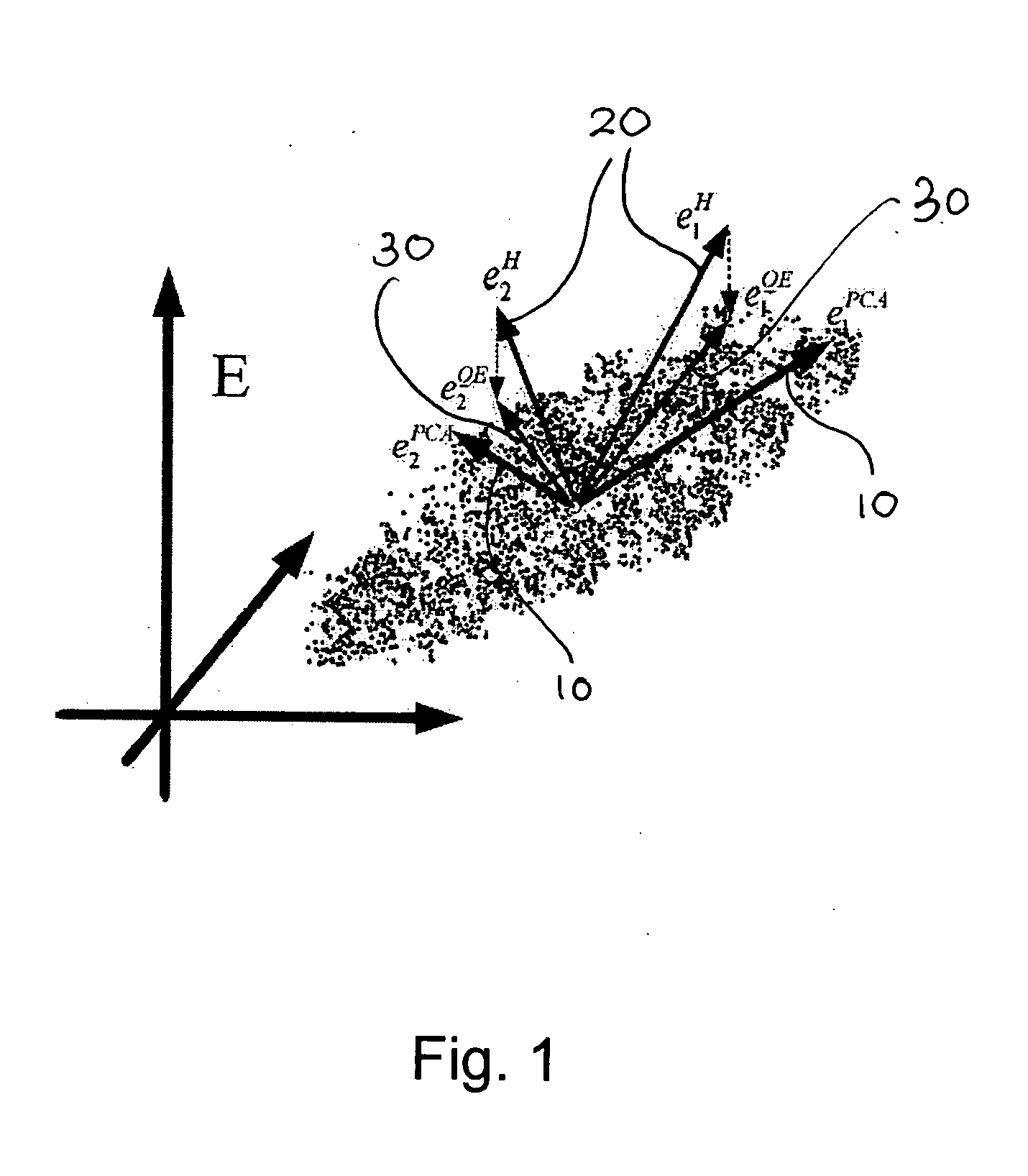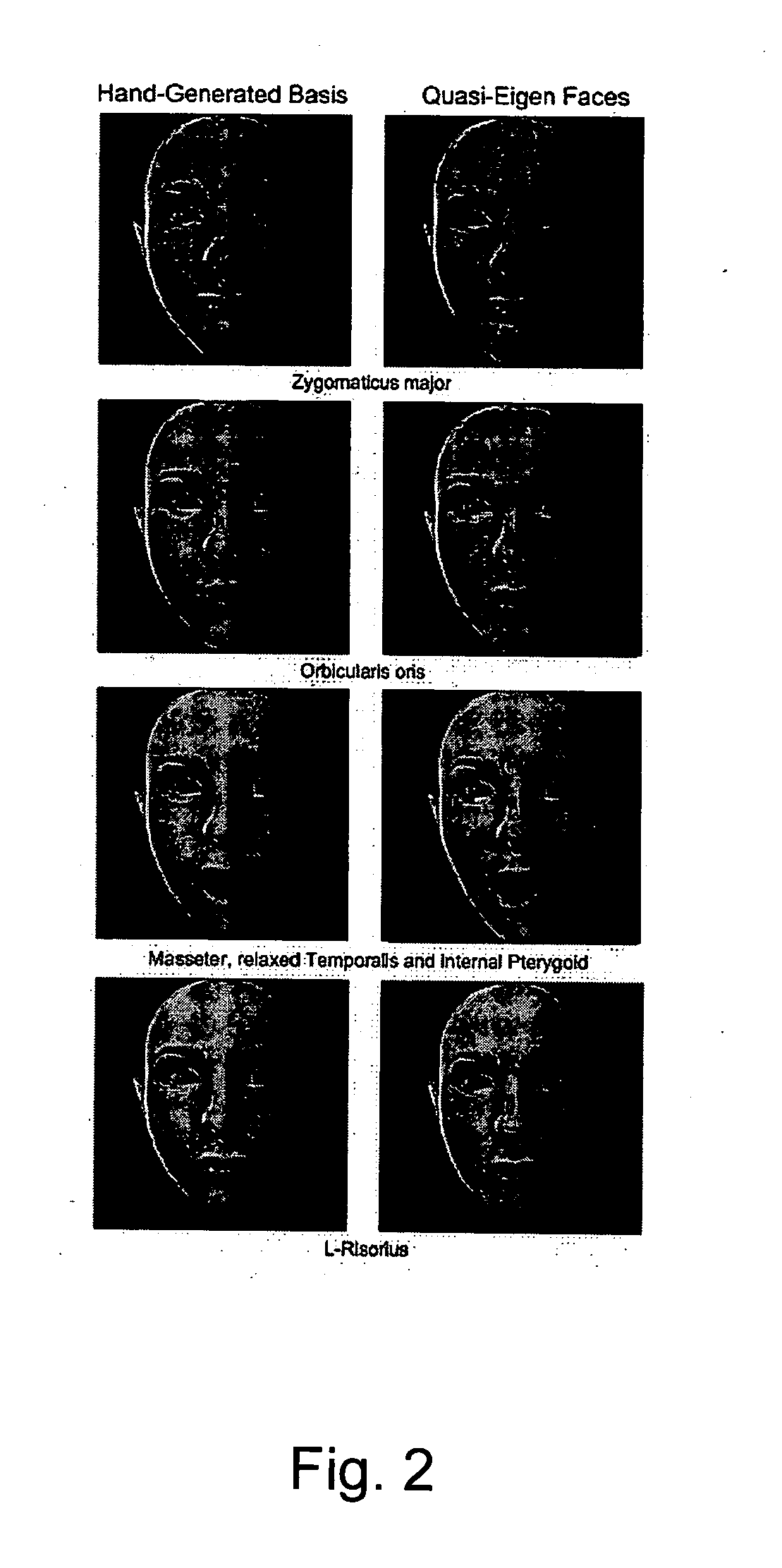Method for generating intuitive quasi-eigen paces
a quasi-eigen pace and intuitive technology, applied in the field of method for generating intuitive quasi-eigen paces, can solve the problems of lack of coverage no standard procedure for generating facial expressions has been established, and linear combinations may only cover a portion of full range of facial expressions, so as to reduce reconstruction errors
- Summary
- Abstract
- Description
- Claims
- Application Information
AI Technical Summary
Benefits of technology
Problems solved by technology
Method used
Image
Examples
Embodiment Construction
4. Obtaining Quasi-Eigen Faces
[0057] If the facial vertices v1, . . . , vN are allowed to freely move in 3D space, then v will form a 3N-dimensional vector space. Let us call this space the mathematical expression space E. However, normal human expressions involve a narrower range of deformation. If the applicants plot each expression in Ξ as a point in 3N-dimensional space, the point cloud forms an approximate hyperplane. The PCA is designed to identify the orthogonal axes that spans the hyperplane.
[0058] The analogical situation is shown in FIG. 1. The 3D coordinate system can be viewed as E, the dots as forming the Ξ-hyperplane, and the solid perpendicular axes as the principal components. The arrows 10 stand for PCA basis, the arrows 20 hand-generated basis, and the arrows 30 quasi-eigen basis.
[0059] The procedure for obtaining the quasi-eigen faces is based on the principal components. Finding the principal components requires the point cloud to be centered at the origin. L...
PUM
 Login to View More
Login to View More Abstract
Description
Claims
Application Information
 Login to View More
Login to View More - R&D
- Intellectual Property
- Life Sciences
- Materials
- Tech Scout
- Unparalleled Data Quality
- Higher Quality Content
- 60% Fewer Hallucinations
Browse by: Latest US Patents, China's latest patents, Technical Efficacy Thesaurus, Application Domain, Technology Topic, Popular Technical Reports.
© 2025 PatSnap. All rights reserved.Legal|Privacy policy|Modern Slavery Act Transparency Statement|Sitemap|About US| Contact US: help@patsnap.com



